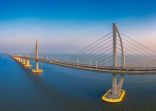Before the Covid-19 pandemic, a constant theme among investors was the search for income. Asset managers launched fixed maturity products, with (almost) guaranteed yields, to meet that need among clients of wealth managers against a backdrop of low developed market interest rates and narrowing investment grade bond spreads.
Since the coronavirus outbreak, that requirement has become more acute. Near-zero US and European government bond yields and tight investment grade corporate bond spreads, as well as dividend cuts made by usually reliable blue-chip companies, have made the task of securing income even tougher in both fixed income and equity markets without assuming an unacceptable level of risk.
However, several asset managers, such as Blackrock*, are pressing the case for Asia high yield credit as a neglected source of income. Careful individual bond selection can mitigate anxieties about default risks and counter periods of general market volatility, while also taking advantage of attractive valuations relative to global high yield credit as well as to historical levels.
Moreover, investors can participate in a region still characterised by rapid structural change through its adoption of new technologies and its shift to urbanisation, concurrent with the rising wealth of its population.
Indeed, Arjan De Boer, Hong Kong branch deputy CEO and head of markets, investments & structuring for Asia at CA Indosuez, is “seeing incrementally more demand for Asia high yield bonds among clients”.
Relative value
De Boer advises clients to allocate about 20% to 25% of their portfolio to instruments that are focused on income generation.
“Given the low interest rate environment, we still see value for selected sectors in Asia high yield,” he told FSA.
“Asia high yield offers value versus Asia investment grade based on current valuations, and we believe that Asia high yield has more than fully priced in higher default risk in the next 12 months,” he said.
Daryl Ho, senior investment strategist at DBS Bank, goes further and argues that “Asia high yield is pricing in default rates much wider than forecast”.
“At current levels, you are getting about 200 basis points (bp) more yield compared to developed market high yield credit, while from a technical perspective, entering Asia high yield at about 800bp [at present] generally has a long track record of producing positive one-year forward returns,” he said.
According to JP Morgan forecasts, default rates in Asia could rise to 4% this year from 1.6% in 2019, but well below the 8% default rate the bank expects in the US high yield bond market.
Yet, Asian high yield enjoys yield, duration and credit quality advantages.
As of the end of May, the average yield-to-worst is 9.5% in Asian high yield, compared with 6.8% in the US, while their respective average durations are three years and four years, and credit ratings of BB- and B+, according to Blackrock.
Despite the appearance of an asset class punching below its weight, Asian high yield has also generated better returns with lower volatility.
The ICE BofA Asian Dollar High Yield index has achieved a 15.18% three-year cumulative return with 9.94% annualised volatility, according to FE Fundinfo data. In contrast, the ICE BofA US High Yield index has posted a cumulative return of 13.21% with 10.18% volatility.
So far this year, the Asian high yield index has a positive return of 1.62%, compared with a flat performance by US high yield.
Default and liquidity risks
However, concerns about default risk and liquidity prompt circumspection among wealth managers and their clients.
“Clients remain cautious about having exposure to weaker credits, and most of the interest is for stronger BB names and [especially] China high yield property issues,” said de Boer.
“The latter account for about half of the investable Asian high yield universe and we believe that the sector enjoys support from the Chinese authorities. Furthermore, short-term liquidity remains ample for many of the issuers and so we are comfortable with the credit risk in that space,” he said.
On the other hand, de Boer is wary of India and Indonesia, where he believes lending standards are tight and companies with short-term refinancing needs are finding it harder to secure funding.
More generally, “if we do get another wave of Covid-19 spikes and subsequent lock-downs across cities, then it could prolong the economic pain and hurt business profitability further. This could spell more debt restructuring risk down the road,” he said.
For Ho at DBS, the biggest risk in the Asian high yield market is the threat of poor liquidity.
“The size and players in the Asian high yield market are smaller than in developed market high yield, which means daily trading liquidity is not excellent, and in a sell-off prices can move with a lot of volatility,” he said.
Ho advocates a long-term investing strategy towards Asia high yield, where investors “rely on good credit analysis to pick up bonds to hold for the long run and give lower regard to price volatility”.
“The ability to hold the bonds through uncertainty is key,” he said.
Comparative returns of high yield bond indices

Source: FE Fundinfo. Three-year cumulative returns in US dollars.
*FSA is hosting a webinar on Thursday, 13 August on Seeking Income and Growth in Asian High Yield, presented by Neeraj Seth, Managing Director and Head of Asian Credit, BlackRock. Please click here to register.

















